SaaS Content Marketing
10 mins read
SaaS Contextual Marketing: Turning Your Content Into Users-Acquiring Assets
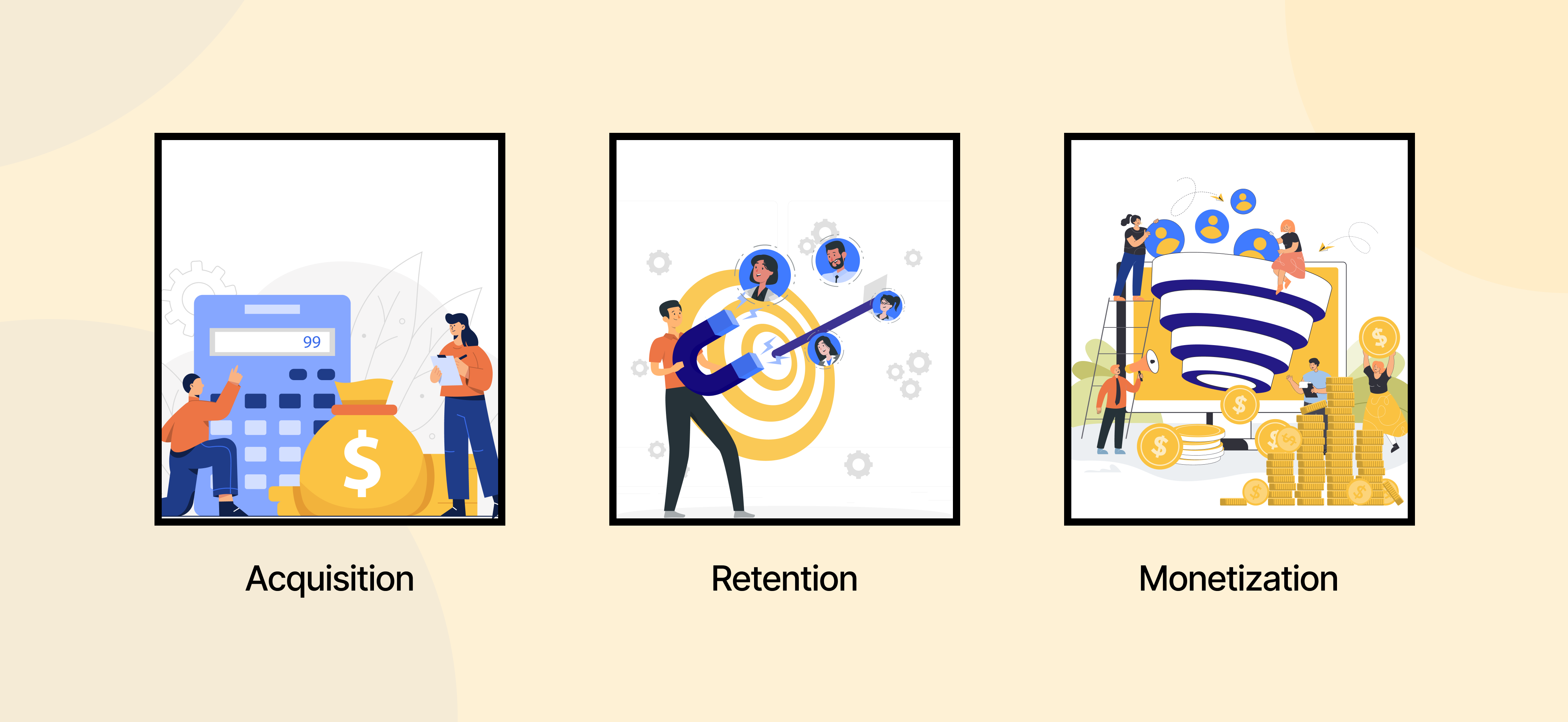

Sheriff Subair
That’s the number of blog posts written per minute. Every SaaS founder and marketer seems to have realized owning a blog is a great way to drive traffic. And they have decided to drown their readers with content.
This should be a good thing, right?
These SaaS websites should have more traffic, more engagement, and therefore acquire new users daily.
Well, not exactly.
Research reveals the continuous increase in the number of content produced results in decreasing average engagement in terms of social share:

What does this trend tell us, you ask?
First, it shows by itself, content isn’t king anymore. And that’s because we’ve reached a point of content shock: Where new content isn’t reaching target audiences. This is affecting (and will continue to affect) the ability of SaaS companies to reach and convert new customers.
There has to be a better way, surely.
It’s why Kristina Halvorson, host of the Content Strategy Podcast, said:
“More content is not better. What is the worst-case scenario if we slow ourselves down and do some analysis?”
Well, let’s slow down a bit and rethink our strategy.
What I’ll Cover
- Why Does Contextual Marketing Matter To SaaS?
- SaaS Contextual Marketing + Product-led Storytelling: A Match Made In Heaven
- Conclusion: Acquire New Users With Contextual Product-led Stories
You don’t need to continue creating content just so your SaaS blog looks alive. You’ll only be enhancing the content saturation we’re already drowning in. And customers have shown they’re now hard to get anyway.
The only way to get customers’ attention today is by creating content tailored to their specific needs. In short, by adding context to your content.
That’s the basis of contextual marketing for SaaS.
Why Does Contextual Marketing Matter To SaaS?
Lemme start by defining contextual marketing.
Contextual marketing is the ability to deliver the right content to the right person at the right time based on the person’s current needs, expectations, or personal experience with your brand.
Using Peter Drucker’s words, the aim is to understand your prospect(s) so well your product sells itself each time ideal customers discover it via your SaaS content. When done right, those who consume your content directly become new users.
And that’s exactly what our clients get when they push the content we craft to their target audience:
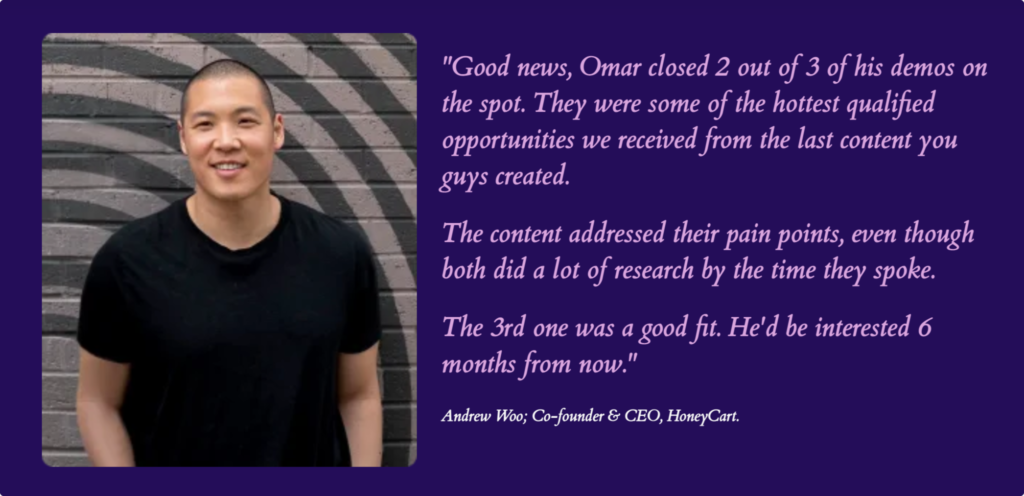
You’d see how we craft contextual content for SaaS companies soon.
For now, know that the increased need to adopt contextual marketing is vital to generating (and capturing) real demand for your SaaS.
And it’s even more crucial now than ever before.
I mean, look around you. SaaS options abound.
I’m pretty sure you can name at least five competitors vying for the attention of your customers. It’s becoming a long battle for prospects’ attention for everyone involved. Yet, today, the attention spans of those prospects have way too many options to pick from. Why should they pick yours?
What I’m saying is….
It’s a survival of the fittest out there in the SaaS world. But prospects have proven they’ll only give their business to companies whose content addresses their pain points. Most especially, those that show them how to solve those problems.
The screenshot below is excellent proof of this:

The guy in the screenshot above is Thomas. He praised Ahrefs, became a loyal fan, and a new user just by consuming their content. Mind you, he didn’t become a “lead,” MQL, or SQL.
How did this happen? And how does Ahrefs use this strategy to acquire over 3k new users per week directly from content?
Well, it’s a combination of a lot of things.
But it’s obvious after reading Ahref’s content, Thomas felt inspired to take action.
He felt like the content was created for him because it spoke to his specific pain points.
To put it simply, he saw everything Ahref preached about in his context. And it was enough to make him pledge his money (and loyalty) to their SaaS product.
Context can do the same for you.
It creates moments your readers can relate to as they consume your content. It does this by keeping your product top of their mind each time they find another of your piece.
It gets them feeling like:
“Oh yeah? I can totally relate to that.”
Now, the question is:
How do you elicit such reactions from prospects as they consume your content?
The answer’s simple. And it’s not rocket science.
Start creating relatable stories driven by your product.
The reason for this is obvious.
If prospects can’t feel or relate to your stories, they won’t find your content (or product) relevant. In short, 63% of customers said they’d think more positively of a brand if it gave them relevant content.
Do you feel me?
I like this quote from Brene Brown, author of Dare To Lead, as it paints a good picture of powerful stories.
She said:
“Maybe stories are just data with a soul.”
Brene’s quote makes sense because once you leverage relatable stories to present ‘soulful’ data to prospects at the right time, you increase your chances of driving sales.
But here’s the thing.
SaaS is a very unique industry. And as a result, the implementation of this strategy is different. To move the proverbial needle with your sales, you have to take a different approach.
Why is that so?
Let’s see.
Why SaaS Marketing Is Different
B2B selling is hard. Let’s admit that. This is evident as we’ve seen the customer journey increase by 22% in the last five years alone.
It’s taking longer to convert a lead into a paying customer. The typical SaaS sales funnel isn’t reliable anymore, either.
There are different reasons why this is so.
One big reason is the fact that we now live in a digital world. Customers do not need to speak to a sales representative before making their minds up about a product. They are on the lookout for the shortest path towards making a buying decision. It’s why online search, word-of-mouth referral, and self-serve demos are growing in prominence.
For instance, research shows customers now go through 60-70% of their decision-making process before speaking to a sales representative.
And instead of speaking to sales representatives, B2B buyers are increasingly relying on free trials, demos, referrals, and communities:
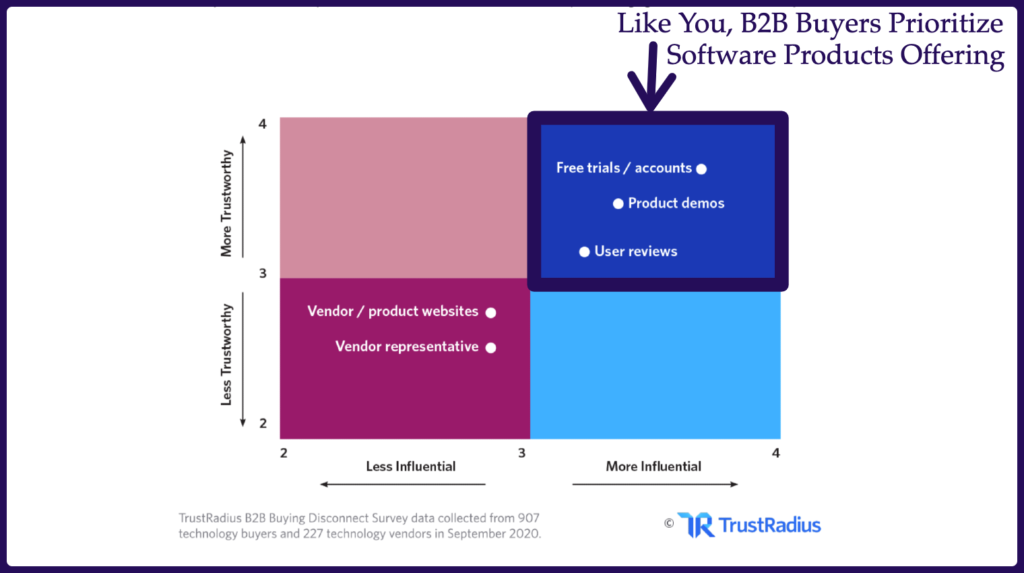
This trend is changing the dynamics of marketing and sales forever.
But there’s another prominent reason why SaaS companies record longer sales cycles.
Wrong content strategy.
Content marketing is, no doubt, still a massive growth driver. It’s so successful over 86% of B2B marketers use it.
However, acquiring new users via SaaS content marketing needs a great deal of context and relatable stories. As we’ve seen so far.
To achieve this by blending those two, it’s apparent there’s a need to take a different approach.
The need for this new approach is what inspired our team at VEC to formulate Product-led Storytelling. See it as a story-driven, product-focused form of SaaS content marketing that promises a whole new world of untapped growth potential for SaaS companies.
We preach and practice this strategy, not because we coined the term. But because it works for our clients and us.
We get new business inquiries directly from our content pieces:

And for our clients?
Besides getting new trial users directly, our customers feel more confident of driving long-term growth and brand reputation via the content we craft for them:
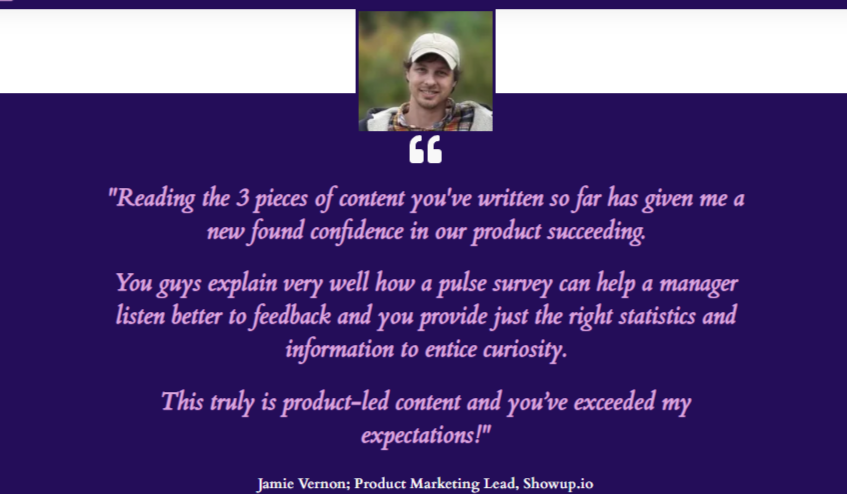
So, why did we feel the need for a new SaaS content marketing framework? Why isn’t the traditional content marketing method enough?
The primary reason is the SaaS business model thrives across three stages. And context is vital to each.
Why Context Is Vital to the SaaS Growth Stages
The subscription model divides the B2B SaaS sales cycle into three distinct stages.
- Acquisition
- Monetization
- Retention
These three stages are essential, no doubt.
But, traditional content marketing methods focus a huge deal of time (and resources) on acquiring leads. This is obvious in the popularity of buzzwords such as marketing-qualified leads (MQLs) and sales-qualified leads (SQLs).
Here’s what a typical customer journey for a traditional B2B company looks like:
- A prospect who’s eager to solve a problem types in her query in search engines. She clicks on company A’s blog post, which takes her to their website. She’s then forced to download an ebook in exchange for her email address, effectively becoming an MQL.
- Afterward, she’s again forced to go through the unavoidable drip email campaigns. And after passing some set criteria, she’s passed on to sales as an SQL. Then, the sales department appoints a rep to make a move to close her.
Sounds simple enough, right?
Nope, it isn’t that straightforward.
This research shows the scenario described above is harder to pull off than it sounds. According to the report:
- 95% of website visitors never provide an email address to the company
- Of the 5% who do, only about 20% open the emails they get afterward
- Most companies are converting less than 1% of all their possible leads.
Those numbers aren’t good.
They’re awful in a SaaS industry where you must shrug off competition and worry about churn.
So, what do you do?
Thankfully, we can call upon another research to help shed light on this matter.
A study by Profitwell set out to discover how a SaaS company’s growth will be impacted by a 1% improvement in each of the three lifecycle stages.
- Acquisition
- Monetization
- Retention
Here’s what they found:
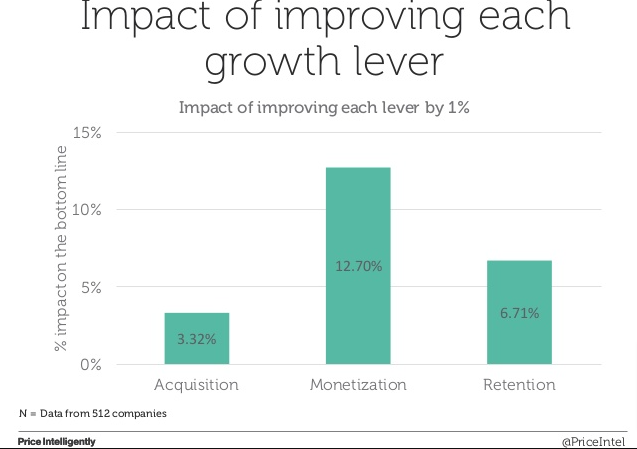
From the chart above, improvements in the acquisition stage will have a greater impact on your company’s growth and retention. We are looking at a 2 – 4x increase in bottom-line impact.
You obviously don’t want to stop driving new leads for your company. But you’ll be leaving a lot of money on the table if you’re still driving the kind of leads where an email list of 20,000 only convert at 1% (200 leads) after, say, 3-6 months.
If you’ve already laid out a marketing strategy for your company, ask yourself these questions.
- “Is my strategy focused on real demand generation and acquisition?”
- “What is my plan for monetization and customer retention?”
If your answer to the first question is no. And the answer to the second question is not sure, then you’ve got a problem that needs fixing.
This is how to fix it.
SaaS Contextual Marketing + Product-led Storytelling: A Match Made In Heaven
Let’s go back to our earlier definition of contextual marketing.
I said contextual marketing is the ability to deliver the right content to the right person at the right moment based on the person’s needs, expectations, or experience with your brand.
In other words, I’m saying that contextual marketing is delivering the right content to the right person based on their position in the customer journey.
But you shouldn’t just deliver content to your prospects. Your goal should be to increase sales.
You must ensure prospects actually consume that content. And take a significant step towards conversion by signing up for a trial or demo as a result of the content.
Yes, it can be done.
You can convert prospects directly into product users without going through the stress of labeling them MQLs or SQLs. With relatable stories and the right context, a prospect can go from reading your content to becoming a trial-user or product-qualified lead (PQL).
The approach to achieving this is Product-Led Storytelling. As I showed you earlier, our clients testify this approach works:

Product-led storytelling, in simple terms, is the art of crafting discoverable and relatable stories showing how well-defined audiences can overcome specific challenges with your product. It’s a no-brainer if you’re looking to adopt Product-Led Growth.
And that’s because this approach transforms regular content pieces into funnels on their own.
It’s common sense.
By adding context to your product-led stories, you’ll be crafting compelling content that transforms into users-acquiring assets:
Here’s how it plays out.
- Because you know who your
- Because you understand what stage in the funnel your content points to, you’ll be able to create contextual stories that show (and not tell) your customer how to solve their problem. Feel free to use
- And because your end goal should be to land a new user and not enhance a vanity metric like the number of shares or downloads, you should always end with a CTA that encourages your ICP to try out your product. Doing this gets you Product-Qualified Leads (i.e., people who know how your product works and eager to use it). And not more vanity metrics.
Tim Suolo, Ahref’s CMO, perfectly summarized this process in his interview with LeadFeeder.
He said:
“My theory is that people don’t first sign up for your tool and then learn how to use it. [It] is that people first learn how to use your tool, and they sign up because they know how to use your tool.”
And that’s exactly what you’ll be doing.
You’ll be using each content piece to show the right audience how your product solves their problems. At the same time, your relatable stories will add context, drive up engagement, and inspire them to take meaningful, business-driving action.
Conclusion: Acquire New Users With Contextual Product-led Stories
SaaS content marketing still works, no questions there.
But using it to unlock new marketing and sales opportunities for your brand now thrives on context and stories.
As I’ve shown you, an excellent way to execute this is by blending your content marketing efforts with context and product-led storytelling.
At VEC, we put our money where our mouth is. It’s why we use this same strategy to create content for ourselves and our clients.
The results?
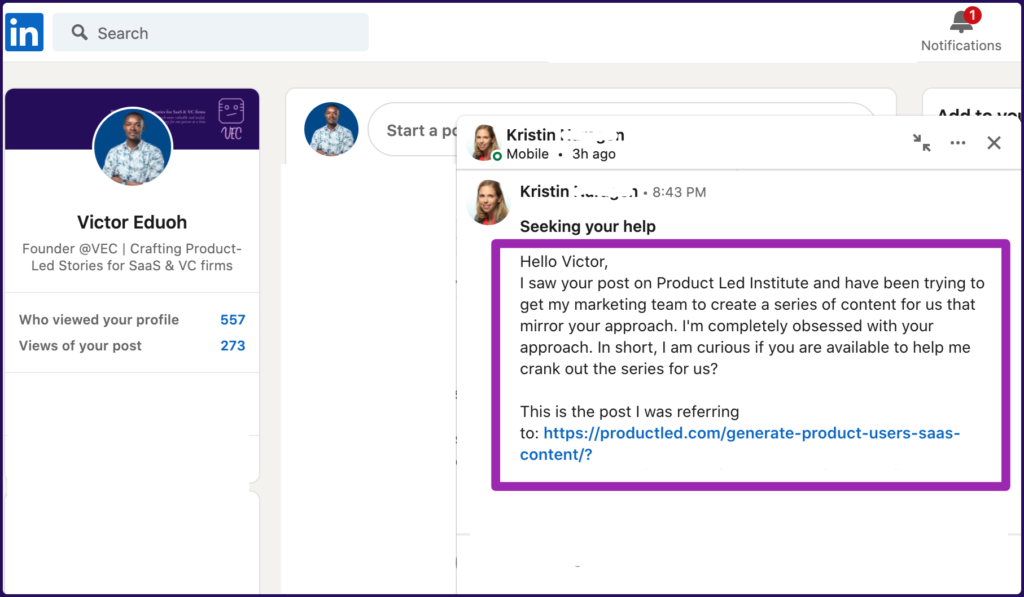
Over to you…
As you spice up your SaaS content marketing efforts with context, ensure you do so with Product-Led Storytelling. If you’re new to this concept, check out our free, exhaustive guide here (over 7,700 words).
Or visit our pricing page, and we’ll be happy to help you transform your SaaS content into contextual customers- and fans-acquiring product-led stories.

Sheriff Subair
Product-storyteller. I'm enthusiastic about all things tech-y and startup-y.
Rare insights, in your inbox
How do SaaS Founders and B2B Content Leaders build brand and drive growth through story-driven content execution? Dig that, plus rare Product-Led Storytelling insights, in this bi-weekly newsletter.
Get a copy of our Story-driven, Content Quality Checklist –FOR FREE– once you subscribe.

